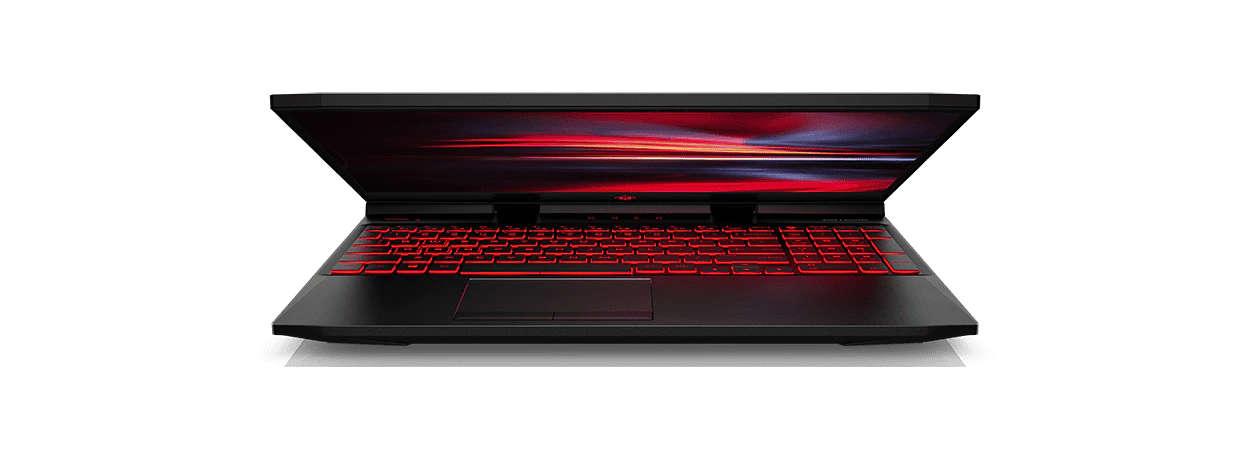Thank you for visiting the HONG KONG HP Store
-
Contact Us
CONTACT USChat with us
- Our specialist are here to help
- Live chat
- Sales
- 85264507529(WhatsApp)
-

- Post Sales
- 85230016720(WhatsApp)
Mon-Fri 8.30am - 5.30pm
(exc. Public Holidays)
Live product demo
Store finder Locate our storesSubmit feedback We value your opinion! - Location
- My Account
How to Stop Laptop Screen Flickering


Computer problems are a headache, and a flickering laptop screen can definitely cause one. It can destroy productivity in the office, and turn a couch-cinema experience into a royal inconvenience. The constant blinking only serves to distract and frustrate, so the moment it starts, you’ll be in need of a quick solution.
Fixing a flickering laptop screen doesn’t necessarily require a trip to the PC repair shop. Solutions as simple as lowering and raising the screen repeatedly or updating your graphics card drivers may solve your blinking screen dilemma. But what causes a laptop screen to flicker and what are the many fixes that work to stop it? This guide will answer all of your burning questions.
Why is my laptop screen flickering?
The causes behind laptop screen flickering on Windows 10 PCs can be boiled down to a few common culprits. An aging PC shows signs of regular wear and tear as years pass by, and loosened internal cables can create a number of nasty glitches. Newer computers with screen flickering problems may be the victims of incompatible applications or defective hardware. Let’s deep dive into the many reasons why your laptop screen has started flickering.
1. App incompatibility
Personalizing your PC into your own unique digital hub means downloading all of your favorite applications and programs. In certain cases, your PC won’t be able to handle the parameters and specs of certain applications which can cause screen flickering.
In order to figure out if an incompatible app is responsible for your laptop screen flickering, follow these three easy steps.

Step 1. Access your task manager by pressing CTRL + ALT + DEL and selecting “Task Manager.” You can also right-click the Windows taskbar and find the task manager there.
Step 2. With the task manager open, watch your screen for any flickering. If everything on the screen flickers except the task manager, then you’ve got an incompatible app living on your PC.
Step 3. If the task manager flickers during your observation then you’re likely dealing with a separate issue.
2. Outdated PC display drivers
It’s easy to neglect Windows software updates, especially when you know how long they’ll take. Those in the habit of putting their computer to sleep rather than shutting it down are more susceptible to the effects of outdated drivers.
Malfunctioning internal devices can lead to poor display resolutions, glitchy internet connectivity and of course, a flickering laptop screen. Both visual aspects and functionality in PC components suffer the consequences of outdated drivers when patches, updates, and bug fixes go by the wayside.
Wondering if your PC is due for an update? Check the status of your Windows 10 operating system in five easy steps.
Step 1. Press the Windows taskbar button and press the gear symbol to access your PC settings.
Step 2: Select “Update & Security” tab.
Step 3. If your PC has scanned for available updates recently, you may see a list of pending installs alongside the names of programs, extensions, or drivers that need immediate updating.
Step 4. If your PC has not completed an automated scan, you will be able to select “Check for updates.” This will sweep your hardware and operating system for any necessary updates.
Step 5. Click “Install updates” and let your PC do the rest. Pro tip: Be sure to have your PC plugged in while updating - running out of battery in the middle of an update process could corrupt or damage your operating system.
3. Loose or damaged wires
Characterized by their clamshell form, the laptop computer is the ultimate portable PC that lets you take all of your digital processing on-the-go. Unfortunately, the rigor of your commute or careless opening and closing of your laptop can take a toll on your computer’s physical condition.
Wires connecting your laptop screen to the base keyboard chassis can become loose or damaged over time, potentially resulting in a flickering laptop screen. In order to test if your problem stems from malfunctioning wires, lower and raise your laptop screen repeatedly to check if the flicker is related to movement. If certain angles flicker while others don’t, chances are you’re dealing with faulty internal wiring.
A loose or damaged screen cable, inverter, or backlight are all possible culprits behind your particular laptop screen flickering woes.
How do I fix a flickering laptop screen?
Figuring out the reason behind your flickering laptop screen will better assist you in your efforts to finding an easy DIY solution. Since a blinking screen can ruin the PC user experience, you’ll want a quick-fix ASAP. Use these 5 solutions to nip that buggy screen in the bud.
1. Update your display driver
In order to properly update your computer’s display driver, you’ll need to start your computer up on Safe Mode, uninstall your current display adapter, and check for driver updates. This three-part, 10-step process will do the trick.
How to boot in Safe Mode
Step 1. Press the Windows taskbar button and press the gear symbol to access your PC settings.
Step 2. Select “Updates & Security.”
Step 3. On the left-side taskbar, select “Recovery.”
Step 4. Under “Advanced startup” select “Restart now.” This will reboot your computer and send you to a blue troubleshoot screen that lets you manage everything from startup repairs to system restores.
Step 5. Select “Advanced options.”
Step 6. Select “Startup Settings,” and press “Restart.”
Step 7. Once your PC reboots, select option #4 using number keys or function keys 1-9 to “Enable Safe Mode.”
How to uninstall the current display driver
Step 1. To uninstall your current display driver in safe mode, right-click your Windows taskbar to access the Power User menu.
Step 2. Select “Device Manager.”
Step 3. Within the device manager window, extend the “Display adapters” tab to reveal your PC’s active display devices.
Step 4. Right-click the name of your current display adapter to access an operations task list.
Step 5. Press “Uninstall device.”
Step 6. A new box will pop-up, giving you the option to “delete the driver software for this device.”
Step 7. Check this box off, and press “Uninstall.”
Step 8. Restart your PC.
How to reinstall display drivers
Step 1. Open settings from the Power User menu again (right-clicking the Windows taskbar icon).
Step 2. Select “Update & security.”
Step 3. Under the “Windows Update” tab, select “Check for updates” to download and install the most up-to-date display driver.
2. Download latest drivers directly from the manufacturer
Windows 10 does an excellent job of updating your PC with necessary fixes and patches but some important drivers go by the wayside. If your laptop screen has started flickering, you may be overdue for a manual driver update.
If you’re unsure of your display card’s manufacturer, you can check it by following these easy steps.
Step 1. Access the Power User menu by right-clicking the Windows taskbar icon.
Step 2. Select “Run.”
Step 3. Type “dxdiag” into the Run dialog box.
Step 4. The DirectX Diagnostic Tool window will pop up, granting access to all of your PC’s hardware information. On the top toolbar, you’ll see a number of tabs.
Step 5. Select “Display 1.”
Step 6. The name, manufacturer, device type, and all other related display information will be readily available.
With the manufacturer and device name information, you’ll know exactly where to look for direct driver updates and downloads. The vast majority of HP laptops are supported by the following display driver manufacturers:
Each manufacturer will have a page dedicated to driver updates and downloads to best service your specific driver.
3. Disable Windows Desktop Manager

Windows 10 is lauded for its innovative visual effects and elements that set it apart from other competing operating systems. Desktop Window Manager is an all-encompassing window manager that makes all of those appealing transparent windows, live taskbar thumbnails and high-resolution monitor support features possible.
Unfortunately, there is a small chance that the window manager’s processes are responsible for your laptop screen flicker.
To disable Desktop Window Manager follow these steps:
Step 1. Access the Power User menu by right-clicking the Windows taskbar icon.
Step 2. Select “Run.”
Step 3. Type “services.msc” into the Run dialog box.
Step 4. Locate “Desktop Window Manager Session Manager.”
Step 5. Right-click on it and select “Stop.”
Step 6. Right click “Desktop Window Manager Session Manager” again
Step 7. Select “Properties.”
Step 8. Under the “General” tab, modify the start-up type to “Disabled.”
Step 9. Press “OK.”
4. Modify the refresh rate

If you’re finding that your laptop screen flicker only occurs when you’ve linked your PC to an external monitor, the problem could be the refresh rates. A device’s refresh rate is a measurement of the number of times the screen redraws in one second. A laggy refresh rate can look like flicker when in reality you’re just dealing with slow video processing.
Follow these steps to align your laptop’s and external monitor’s refresh rates.
Step 1. Open the Power User menu by right-clicking the Windows taskbar icon.
Step 2. Select “Settings.”
Step 3. Within settings, select “System.”
Step 4. On the side taskbar, click “Display.”
Step 5. Under “Multiple displays,” select “Advanced display settings.”
Step 6. Observe the refresh rates under the display information for your laptop and external monitor.
Step 7. Click “Display adapter properties” for either device to modify settings.
If your display supports a higher refresh rate but the rate is not available on your PC, reinstalling the latest driver will be your quickest fix. (See #2 above)
5. Take it to an expert technician

If you’ve tried these many solutions and find yourself stuck with a flickering screen, taking it to an expert PC technician may be your best solution. Computers are complex. Sometimes leaving your PC problems in the hands of an expert delivers the results you’re looking for faster and more efficiently than simple DIY tutorials can.
Make sure you look for a certified technician who knows your brand of computer. Often you can find a list of authorized repair shops sanctioned by your brand on their website under “support.”
An expert will be able to open your computer safely, evaluate the wiring and find all of the manufacturer drivers needed if an update is required. Be sure to explain your computer’s unique situation so your technician knows exactly what to look for and what to fix.
- Our specialist are here to help
- Live chat
- Sales
- 85264507529(WhatsApp)
-

- Post Sales
- 85230016720(WhatsApp)
Mon-Fri 8.30am - 5.30pm
(exc. Public Holidays)
Live product demo







